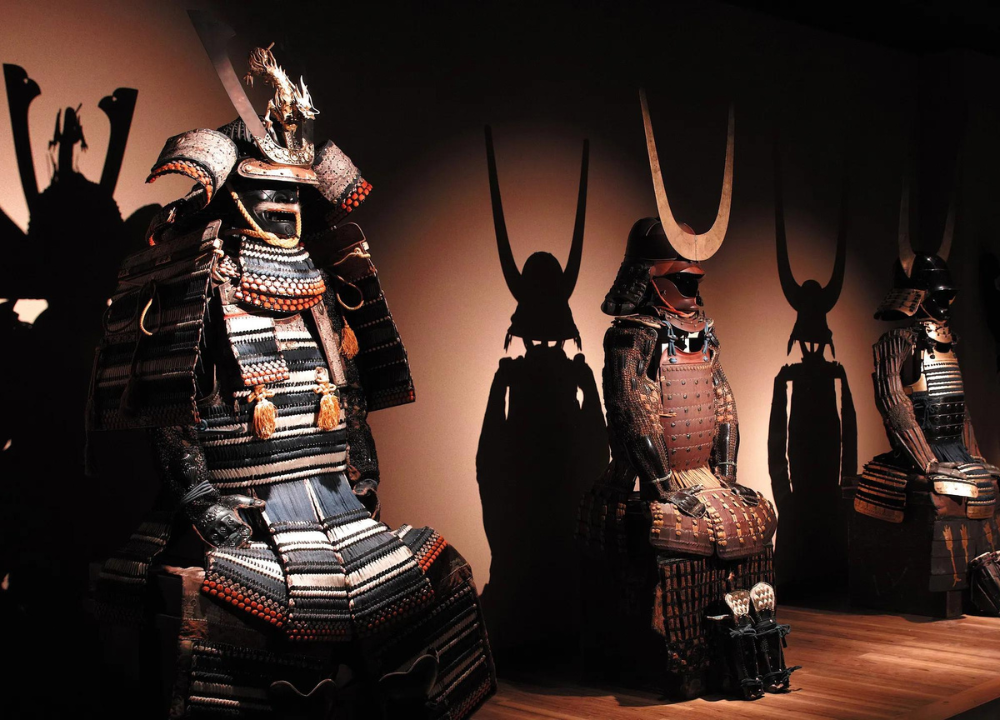The Way of the Warrior: High Museum Samurai Exhibit showcases iconic samurai artifacts and weapons. Explore the rich history and culture of the samurai through this immersive exhibit.
Discover the intricate craftsmanship of samurai armor and swords, and learn about the code of bushido that guided these legendary warriors. From ceremonial helmets to battle-worn armor, each piece tells a story of honor, loyalty, and courage. Immerse yourself in the world of the samurai as you delve into their traditions and practices.
Gain a deeper understanding of this fascinating warrior culture and the enduring legacy of the samurai. Join us on a journey through time and witness the legacy of the samurai come to life at the High Museum Samurai Exhibit.
The High Museum Exhibit
The High Museum Exhibit features a captivating display of samurai artifacts, offering a glimpse into the ancient warrior culture of Japan. This unique exhibition provides an immersive experience, allowing visitors to explore the fascinating world of the samurai through a collection of authentic armor, weapons, and art pieces. The Way of the Warrior: High Museum Samurai Exhibit is a must-see for history enthusiasts, art lovers, and anyone intrigued by the legacy of the samurai.
Origins Of The Exhibit
The Way of the Warrior: High Museum Samurai Exhibit originated from a collaboration between the High Museum of Art and several prestigious Japanese institutions. The exhibition was curated to showcase the rich history and traditions of the samurai, offering a comprehensive overview of their role in Japanese society and the enduring impact of their legacy. With a focus on authenticity and cultural significance, the exhibit presents a rare opportunity to delve into the world of these legendary warriors.
Exhibit Highlights
- Authentic Samurai Armor and Weapons
- Exquisite Artwork and Calligraphy
- Interactive Displays and Multimedia Presentations
- Cultural Workshops and Demonstrations
Samurai Armor
The Way of the Warrior: High Museum Samurai Exhibit offers a fascinating insight into the world of the Samurai, showcasing their armor, weaponry, and culture. The Samurai Armor, in particular, is a captivating aspect of the exhibition, providing a glimpse into the evolution and symbolism of these iconic protective ensembles.
Evolution Of Samurai Armor
Samurai armor, known as ‘yoroi,’ has a rich history that dates back to the early centuries of Japan. Originally, samurai armor consisted of small, iron scales laced together with colorful silk cords. Over time, the design evolved to incorporate larger, more protective plates, providing better defense against the increasingly powerful weapons of the era.
Symbolism In Armor Design
The design of samurai armor was not merely for protection but also held deep symbolic meaning. Each element of the armor, from the helmet to the chest plate, was intricately crafted to convey status, clan affiliation, and even spiritual beliefs. The motifs and embellishments on the armor reflected the wearer’s identity and played a significant role in the samurai’s code of honor and loyalty.
Weapons Of The Samurai
The Way of the Warrior: High Museum Samurai Exhibit offers a captivating exploration of the weapons used by the legendary samurai. From their iconic swords to lesser-known traditional weapons, the exhibit provides an in-depth look at the tools and techniques that defined the way of the samurai.
Swords And Their Importance
The samurai’s sword, known as the katana, holds a revered position in Japanese culture. With its elegant design and exceptional craftsmanship, the katana symbolizes the honor and skill of the warrior. Used in ceremonial rites and battlefield combat, these swords were meticulously forged and passed down through generations, representing a samurai’s lineage and expertise in combat.
Other Traditional Samurai Weapons
Beyond the katana, the samurai utilized a variety of traditional weapons that played integral roles in their martial practices. These included the tachi, a predecessor to the katana, renowned for its effectiveness in cavalry combat. Additionally, the yari, a type of spear, and the naginata, a pole weapon with a curved blade, were crucial in battle formations, showcasing the versatility and adaptability of the samurai warriors.

Code Of Bushido
Samurais were the revered warriors of feudal Japan. They lived by a strict moral code called Bushido, which means “Way of the Warrior.” The Code of Bushido was a set of ethical principles that governed the samurai way of life. It emphasized loyalty, self-discipline, and a deep respect for honor and duty. The High Museum Samurai Exhibit showcases this code and its application in the samurai life. Let’s explore the principles of Bushido and how they were applied by the samurai warriors.
Application In Samurai Life
Bushido was not just a set of abstract principles; it was a way of life for the samurai. They applied these principles in every aspect of their lives, from the way they dressed to the way they fought in battle.
For example, samurais always carried two swords, a long one called a katana and a short one called a wakizashi. This was not just a practical choice; it was also a symbol of their commitment to Bushido. The katana was used for fighting, while the wakizashi was used for ritual suicide, or seppuku, if a samurai failed to uphold his honor.
Samurai Training
The Samurai Training is one of the main highlights of the High Museum Samurai Exhibit that showcases the life and culture of Japanese warriors. The exhibit features a collection of armor, weapons, and other artifacts that illustrate the Samurai’s way of life, including their rigorous training regimen and mental and physical discipline.
Rigorous Training Regimen
The Samurai were trained from a young age to become skilled warriors. Their training regimen was rigorous and demanding, requiring them to master various combat techniques and weapons. Samurai training consisted of both physical and mental exercises, including martial arts, sword fighting, horseback riding, archery, and meditation.
Mental And Physical Discipline
The Samurai’s training was not just about mastering martial skills; it was also about developing mental and physical discipline. They were taught to maintain a calm and focused mind, even in the midst of battle, and to control their emotions and impulses. This mental discipline was essential for effective combat, as it allowed them to make clear and rational decisions in the heat of the moment.
Legacy Of The Samurai
The Legacy of the Samurai is a profound and enduring influence on Japanese history and culture. The Way of the Warrior: High Museum Samurai Exhibit offers a captivating look into the essence of the Samurai legacy, shedding light on their philosophy, cultural impact, and lasting influence on modern society.
Influence On Modern Culture
The legacy of the Samurai continues to resonate in modern culture, from popular media to martial arts practices. Their code of honor, discipline, and bravery has left an indelible mark on literature, films, and even business practices. The iconic image of the Samurai, with their distinctive armor and swords, is often used as a symbol of strength and resilience.
Lessons From Samurai Philosophy
The Samurai philosophy emphasizes values such as loyalty, self-discipline, and the pursuit of personal improvement. These principles offer valuable lessons for individuals and organizations seeking to navigate the challenges of the modern world. The Samurai’s commitment to excellence and unwavering determination serves as a timeless source of inspiration.
Frequently Asked Questions
What Floor Is The Samurai Exhibit High Museum On?
The samurai exhibit at the High Museum is located on the second floor.
Does Japan Have A Samurai Museum?
Yes, Japan has a samurai museum showcasing historical artifacts and interactive exhibits. It offers insight into the samurai culture.
Where To See Samurai In Tokyo?
You can see samurai in Tokyo at Samurai Museum in Shinjuku. The museum showcases samurai artifacts and offers live demonstrations.
Are There Still Samurai Today?
Yes, modern practitioners of bushido and samurai traditions exist today, mainly as martial arts enthusiasts or historians.
Conclusion
Step back in time and immerse yourself in the fascinating world of samurais at the High Museum exhibit. Explore the rich history and intricate artistry of these legendary warriors. Don’t miss this unique opportunity to witness their legacy come to life.
Unleash your inner warrior spirit today!




